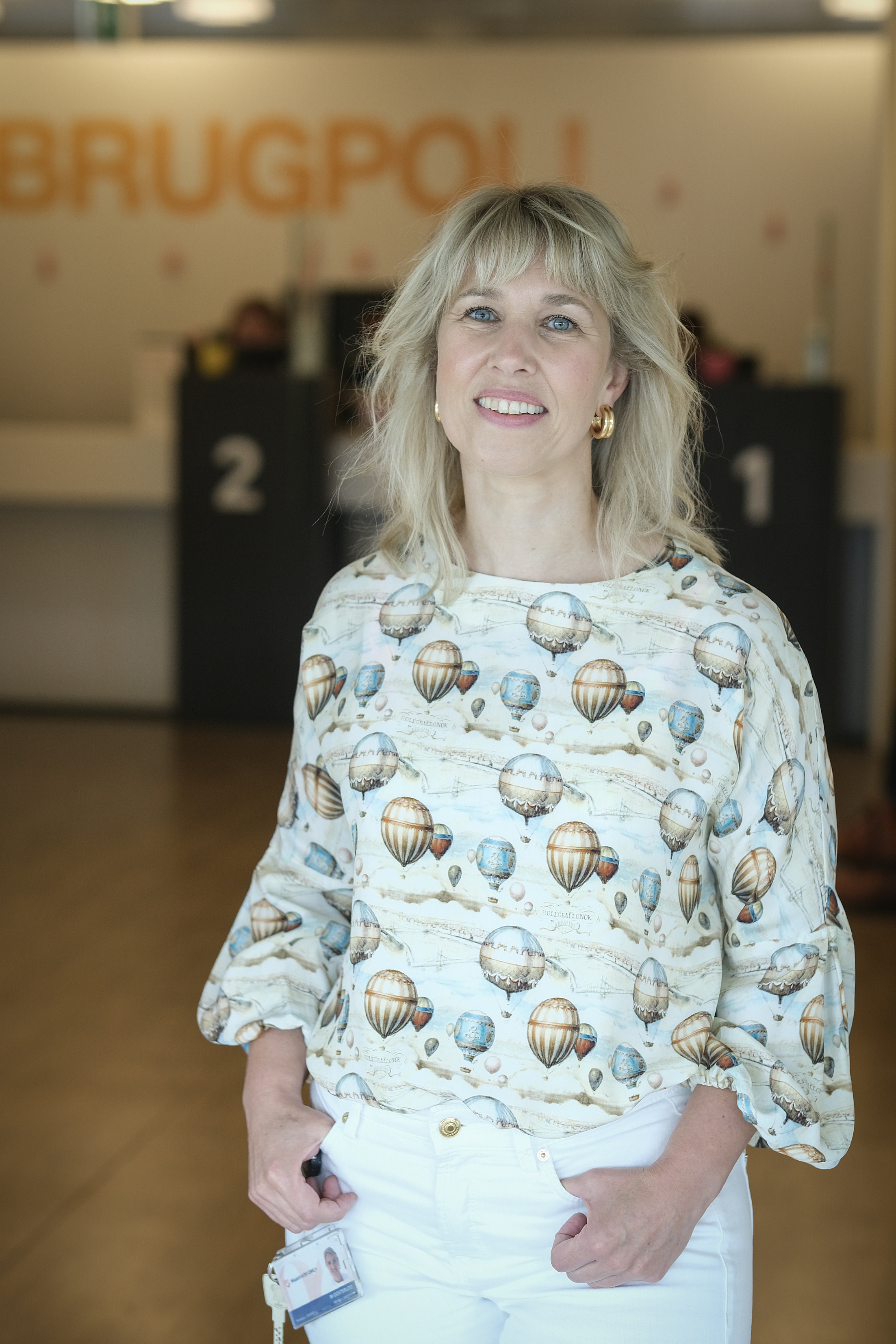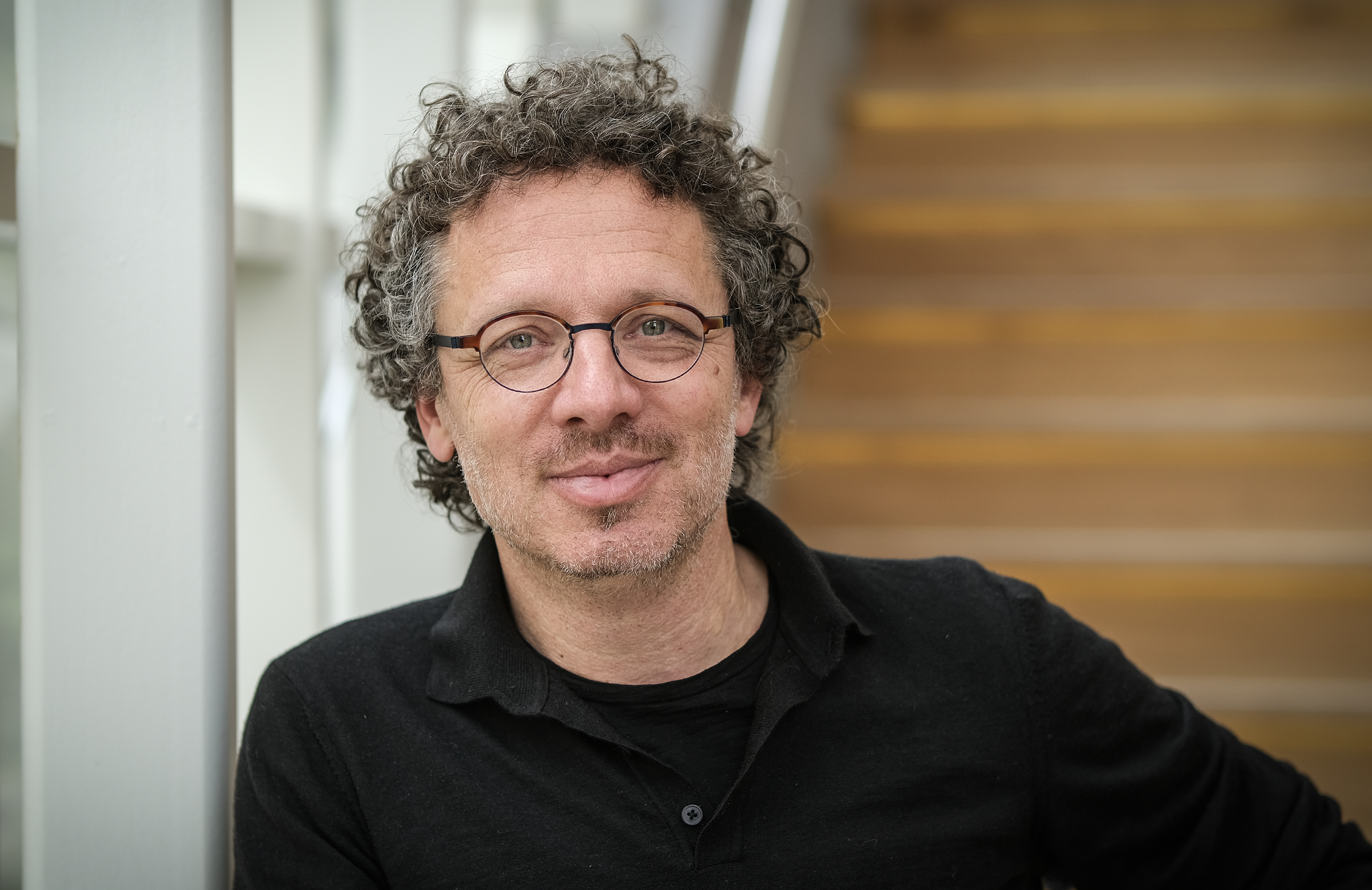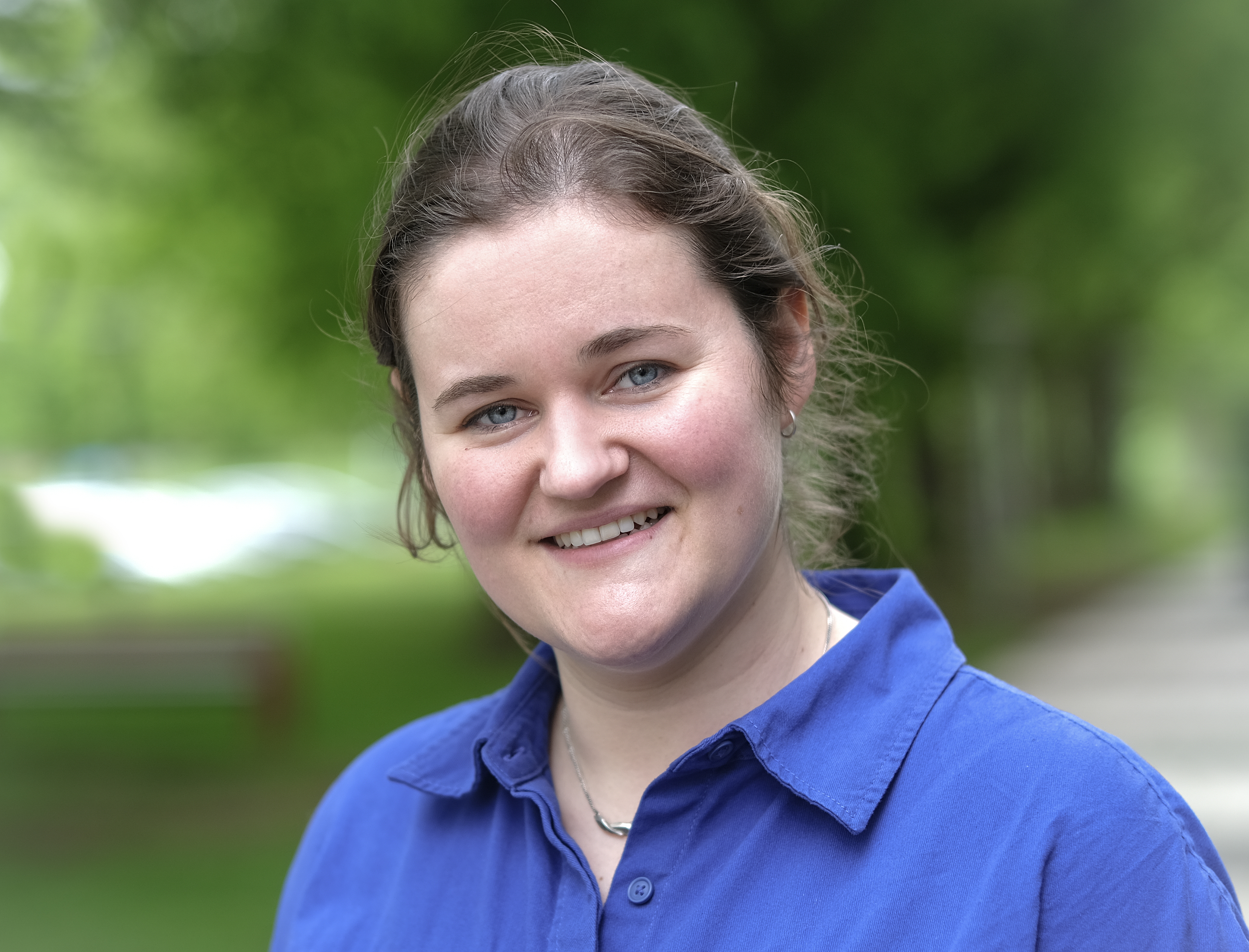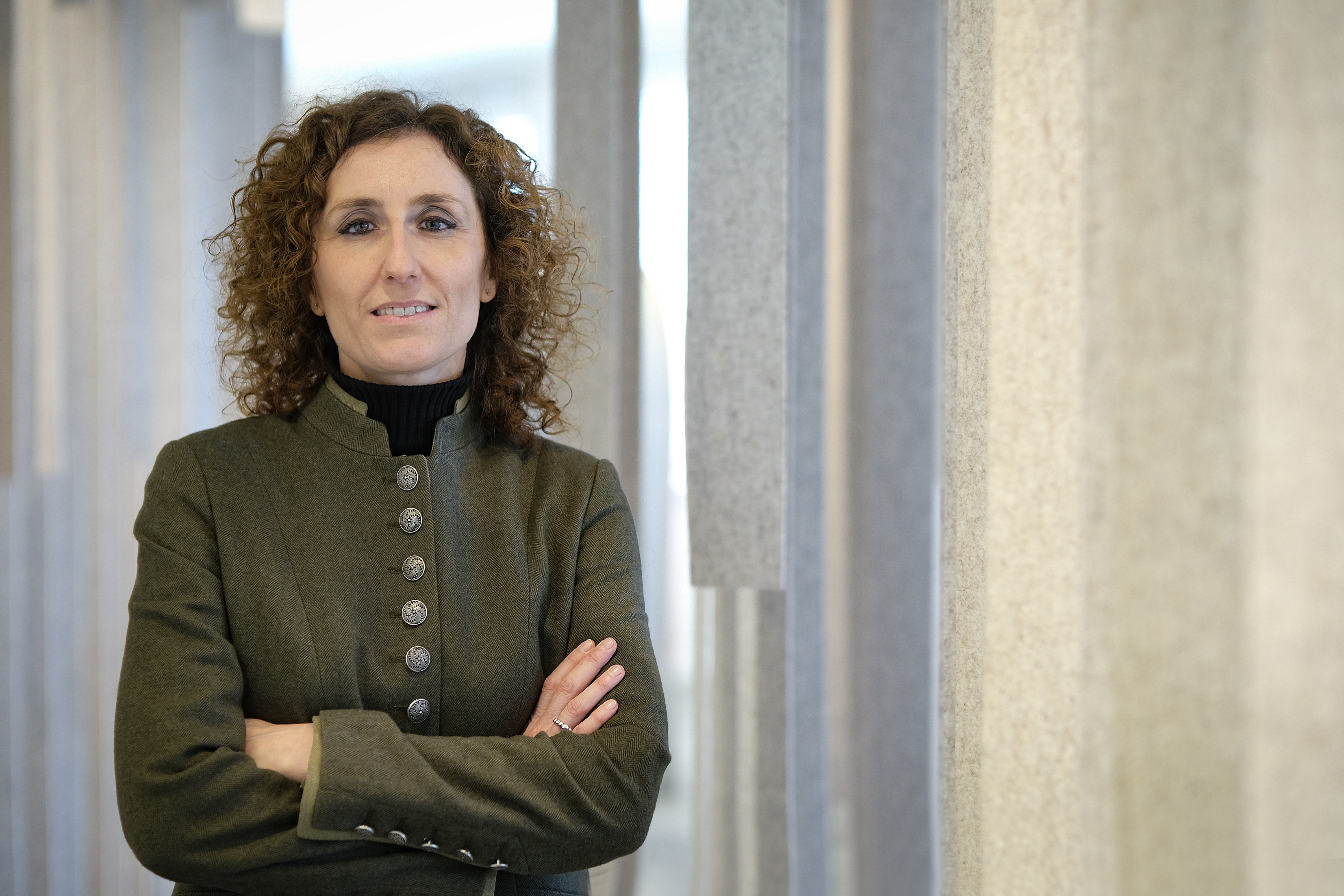Huntington’s is a disease you don't carry alone
Mayke Oosterloo is a movement disorders neurologist at Maastricht UMC+ and a researcher at the MHeNs institute of Maastricht University. In the outpatient clinic and various nursing homes in Limburg, she guides and treats patients (and their loved ones) with Huntington's disease. Her research is diverse but always centers on Huntington's disease. Oosterloo: “I have a special bond with Huntington's patients. They know a terrible fate awaits them, but they often bear this with such dignity. I have a lot of respect for that.”
About Huntington's disease
Huntington's disease is a progressive, hereditary disorder that damages nerve cells in the brain. In the Netherlands, an estimated 1,700 people have this diagnosis, and around 6,000 to 7,000 are at risk. The exact number is unknown: sometimes patients end up in psychiatry and their symptoms are mistaken for another condition, or they die before the disease manifests. The first symptoms usually appear between the ages of 35 and 45, but earlier or later onset is also possible. The disease typically leads to the patient's death within twenty years. Oosterloo: “Patients with Huntington's suffer from cognitive deterioration and sometimes lose their social empathy. Therefore, they may struggle to empathize with another's sorrow. Sometimes there is also aggression, which can lead to encounters with the police and judiciary. Patients with children often experience enormous guilt for possibly passing the disease on to their child. Overall, the disease has a huge impact on a patient's immediate environment. Huntington's disease is not something you carry alone as a patient. It is a very harrowing disease”.
Where does your interest come from?
“I have a strong interest in neuropsychiatry. You experience things in your life that lead you to make certain choices. The same goes for me. I have a special bond with Huntington's patients. They are remarkable people. They know a terrible fate awaits them. Yet most bear it with such dignity. I have a lot of respect for that. These people accept their disease maybe because, unlike other chronic diseases, they have seen it in their family for generations. Huntington's patients are often positive and incredibly driven to participate in research”.
What can be done in terms of prevention?
“Huntington's is a hereditary disease. Both boys and girls have a 50% chance of getting the disease if one of the parents has it. It does not skip generations. To stop the disease, young couples often opt for pre-implantation genetic testing1 . In this IVF process, the embryo can be tested for the disease. Only healthy embryos are then implanted. Sometimes an expectant parent does not know if they have the condition themselves. In that case, it is checked if the sick grandparent's DNA is present in the embryo. Not having children is, of course, another way to prevent passing on the disease. In any case, if you have the disease in your genes, there is little to avoid or slow it down. Not yet.”
Research
Oosterloo: “In all the research I do, Huntington's disease is always the overarching theme, but within that, it is very diverse. The variety and collaboration with many different colleagues, each researching in their own unique way, such as cell biologists, allow me to achieve much more. Collaboration is truly a strength in Huntington's research. It gives a lot of energy.
Intermediate Repeat
For my PhD research, I focused on genetic research. Huntington's disease is caused by a hereditary defect involving the elongation of a letter code in the DNA. We call this a repeat. Healthy people also have an elongation, but in people with Huntington's, it is abnormally long. This results in the formation of a protein with an abnormal structure that causes the disease. People with a repeat of 40 will certainly become ill. With a repeat between 36 and 39, people also become ill, but often not until later in life, possibly dying from other causes before the disease starts. There is also a group of people with a repeat that is not pathogenic by itself but grows slightly with each generation, leading to the disease in the next generation. This is called an intermediate repeat.
I found reports in the literature about patients with an intermediate repeat who exhibited Huntington-like symptoms. I thought: if all other diseases are ruled out, maybe it could still be Huntington's. However, we currently lack sufficient evidence to confirm this. After my PhD research, I wanted to continue this work, and now I am doing so in a large consortium named CureQ. In this consortium, we look at several aspects of Huntington's disease. For example, we want to better predict when an individual will become ill and whether laboratory research can provide clues for treatment. Within the consortium, I proposed to include research on intermediate repeats. We collect blood cells from patients, from which we make stem cells and convert them into brain cells. This allows us to create a mini-brain to observe changes indicating disease activity at the cellular level. Within the consortium, I will also study juvenile Huntington's patients with a colleague from Leiden; these patients, who become ill in childhood, often have a very long repeat, typically above 60.
Partner in Balance
Another study I am involved in is the development of 'Partner in Balance,' in collaboration with the psychology department. We are researching how to support partners, caregivers, and children from Huntington families. This research will be published soon. 'Partner in Balance' was originally developed for Alzheimer's disease as an online support program for partners. We have now adapted it for Huntington's disease with support from the European Huntington Disease Network (EHDN). With part of the contribution of the Ladies Circle Netherlands, we can implement the program in nursing homes specialized in Huntington's disease. Compared to Alzheimer's, there are significant differences. Huntington's disease involves physical problems, is hereditary, and typically affects younger patients. Huntington's often strikes people who still have jobs, young children, and are fully engaged in life. 'Partner in Balance' helps loved ones better cope with the challenges they face. Huntington's disease affects not just the patient but the entire surrounding environment. Good support is essential.
Tear Fluid
Finally, I am researching tear fluid with my colleague Marlies Gijs. This is innovative, never done before, and quite groundbreaking PubMed article. We are investigating whether we can detect biomarkers in the tear fluid of Huntington's patients. The pathogenic protein in Huntington's is mutant Huntingtin, a protein that is difficult to detect. It cannot be found in blood. It can be detected in cerebrospinal fluid, but this is challenging in pre-manifest individuals (people who are not yet ill) and requires an invasive medical procedure (lumbar puncture). It is a remarkable finding that we can now detect the protein in tear fluid, even in people who are not yet ill. We have not yet compared tear fluid with cerebrospinal fluid, only with values known from the literature. The goal is to generate funds to conduct this follow-up research.
Medications
I also want to research the many medications used in psychiatry. The effects of these medications have never been well studied. With my international colleagues, I want to investigate this in a study to gain more guidance in treating our patients.”

Mayke Oosterloo is a neurologist, specialized in movement disorders and Huntington's disease in particular. She is the head of the Huntington's disease expertise center at MUMC+, appointed by the Ministry of Health and the European Reference Network (ERN) for Rare Neurological Disorders (RND). She studied medicine at Leiden University and completed her residency in neurology at Leiden University Medical Center. In 2011, she started as a neurologist at MUMC+.
Mayke completed her PhD thesis entitled "Controversies and Pitfalls in diagnosing Huntington’s Disease" in 2020. Currently, she is involved in various international scientific research projects and clinical trials on Huntington's disease. Additionally, she has initiated research projects on Huntington's disease with other scientists. Her areas of interest include biomarker research, quality of life and care of patients and their families, and neuropsychiatric features and treatment.
Mayke is the chair of the 'Behavioral Phenotype in HD' and co-chair of the 'Juvenile Huntington' working group of the European Huntington Disease Network (EHDN). She is also the chair of the knowledge council of Huntington KennisNetwerk Nederland (HKNN) and a member of the Scientific and Bioethics Advisory Committee (SBAC) of the EHDN.
Application and impact
Oosterloo: "Not everything can be directly applied to patients. Research often requires a long-term commitment, and Huntington's disease is rare. Our impact is therefore relative. However, this doesn't diminish our efforts to translate discoveries into other neurodegenerative conditions. Take the research on intermediate repeats, for example. These repeats are very common in the general population, with an average of about 6% of people having them. It would be immensely valuable if, in the future, we could confidently tell a certain individual, you will never develop Huntington's.' While this may not mean much to that person directly, for us as researchers, such clarity would be a significant reassurance and have a tremendous impact on the medical world. If we find evidence that intermediate repeats can cause diseases—Huntington's in this case, but possibly also other neurodegenerative conditions—we also know that 6% of the world's population is at risk of developing Huntington's, if they live long enough. With that knowledge, we can make a difference for the individual and their loved ones. But it doesn't stop there: Huntington's is a chain. Knowing whether the disease is present is crucial for (grand)children planning to have children themselves.
The tear fluid research can have a broad societal effect and is certainly something that patients and their families will benefit from. It spares them the burden of a lumbar puncture, and it can even be done at home, for example, in the future to determine the effectiveness of a treatment. Testing for Huntington's with tear fluid could be a possibility for elderly individuals visiting memory clinics with cognitive problems. And, of course, the knowledge gained from our tear fluid research can also be applied to other diseases.
The most beautiful aspect of my work is the contact with the patient. I am truly motivated to offer them something. Many people say, 'you can't do anything.' And no, it's not like removing an appendix to solve the problem. But there are so many chronic diseases where there is limited room for action. A big part of being a doctor is listening and trying to figure out the most appropriate solution. Understanding is truly a keyword. I also hope that I can make a bit of an impact with that”.
I am truly motivated to offer patients something
1 Pre-implantation genetic testing (PGT) (formerly called PGD), is a procedure performed during IVF treatment to identify genetic abnormalities in embryos before they are implanted in the uterus.
Also read
-
Drawing blood, inserting an IV, or looking into the ear; even seemingly simple medical procedures can cause anxiety, pain, and stress in children. According to pediatric intensivist Piet Leroy, comfort and trust are just as important as the medical treatment itself. Therefore, he is researching how...
-
As a patient in a hospital, you see many different faces at your bedside every day: a nurse measuring your blood pressure, a doctor or nurse practitioner informing you about the care plan, and a nutritionist providing you with the right food and drinks. Although all these caregivers have their own...
-
Berta Cillero Pastor is an Associate Professor and group leader at the MERLN Institute for Technology-Inspired Regenerative Medicine. Her research is centred around mass spectrometry (imaging) to gain insights into molecules in cells and tissues for biomedical research. With this technique, changes...


